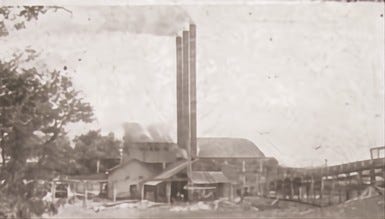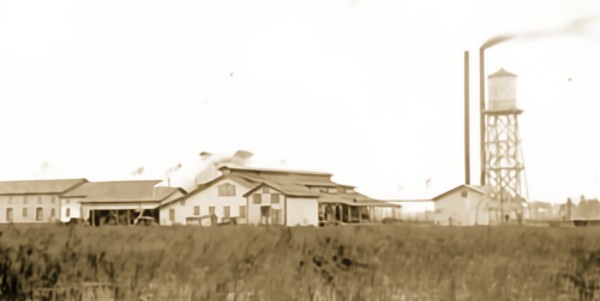Clay History: Transportation, Then Industrialization
Large-Scale Farming Supported a Cannery
By HISTORICAL ARCHIVES CENTER STAFF
The second phase of the Industrial Revolution (1850-1940) came to Clay County via the railroads, and with the railroads and steamboats came tourism. Once Henry Flagler and Henry Plant completed railroads in Florida, northern visitors (our original “snowbirds”) flocked here in droves, some even in private railcars.
Steamboats, the essential steam-powered means of transportation, ruled the St. Johns River and Black Creek. The sound of their whistles, each different from the other, floated over the water. Graceful paddle wheelers churned waves that washed over the riverbank.
Suddenly, grand hotels started popping up beside the spring and along the banks of the St. Johns. The Magnolia Hotel was the grandest of them all, with its third version standing as a massive four-story structure with an indoor spring-fed swimming pool, a ballroom, and wrap-around porches.
Those porches captured the cool winter breezes, and the scenery entertained hotel guests and visitors like Thomas Alva Edison, President Chester Arthur, President Ulysses Grant, President Grover Cleveland, John Murray Forbes, William Morris Hunt and Harriet Beecher Stowe.
In its early history, the hotel (1850s-1870s) guests were northerners who were active in the abolitionist and suffragist movements. In fact, the hotel’s second owner, Dr. Seth Rogers, was Susan B. Anthony’s cousin.
The Magnolia’s grounds boasted tennis courts and a golf course that used Civil War-era Union trenches as sand traps. National golf and tennis champions like Richard Sears and Clarence Hobart came and played in tournaments. One of those trophies is on display at the Clay County courthouse, as are hotel keys, photos, and other items found at the former site.
The hotel offered state-of-the-art amenities like gourmet food, fresh milk and dairy products, hot water, a phonograph donated by Edison, and lights inspected by Edison. He seemed to enjoy his visit, although he did complain about the lunch one day.
Meanwhile, back at the farm, engines began to replace animal and human muscle. In Clay County, especially in the early 1900s, large scale farming and ranching were taking place. Florida Farm & Industries (FF&I) held tens of thousands of acres on which they ran hundreds of head of cattle and operated a dairy.

Recent scientific discoveries have improved the soil with new types of fertilizer, creating greener and healthier pastures. FF&I also had a full-scale cannery on site and used to can crops of tomatoes and other vegetables. A narrow-gauge railway ran from Longbranch, now known as Penney Farms, to Green Cove Springs. Railroads made it much easier to harvest fresh fruits and other crops and get them to unspoiled northern markets. The Atlantic Coast Line Railroad, which had routes all over the state, played a crucial role in the transportation of both farm products and people.
Large sawmills like the Dowling-Shands Lumber Mill were located near both railways and waterways. Timber was shipped down Black Creek on rafts pulled by steamboats and then cut and milled into planks, barrel staves, shingles, and other products. When at full production speed, the mill could produce 1,000 barrels per day. The cutting capacity of the day shift was 3,000,000 feet per month. The planer’s capacity was 1,000,000 feet a month, day shift. A.G. Shands later went on to build the original Shands Bridge.
E.I. DuPont began phosphate-mining operations in the area of Camp Blanding using steam powered shovels. Today, the mine produces titanium, ilmenite, kyanite, leucoxene, rutile, and zircon.
A little community known as Waller, located near Camp Blanding, was once home to E.I. DuPont’s 12,000-acre camphor farm. Camphor is a white, crystalline substance with an aromatic smell and bitter taste, occurring in certain essential oils. Obtained especially from the wood and bark of the camphor tree, camphor was used as a liniment, mild topical analgesic in medicine, a plasticizer, and as an insect repellent.
By 1916, there were 400 acres planted with mature camphor trees and another 350 acres of seedlings. By 1919, 2,000 acres of camphor trees grew. Camphor was also an essential ingredient in gunpowder and fireworks. Alfred Nobel’s 1877 explosive creation of Ballistite, also known as smokeless gunpowder, required camphor. Camphor stabilized the explosives against decomposition and spontaneous explosions. Almost as soon as DuPont got the Waller plant ready, a process for producing synthetic camphor was invented. In 1921, DuPont’s chemists made synthetic camphor from the turpentine of southern pine stumps. The price of camphor plunged, and Clay County was left with acres and acres of a beautiful but invasive tree.
Electrical grids came to Clay County late in the game. Ed Wiggins, as described on his WWI draft card, was a slight man with grey eyes and gray hair at the age of 36. This unassuming man electrified Clay County – literally. In 1924, Ed was running a hardware store in Green Cove Springs when the founders of Keystone Heights, the Lawrence Development Company, asked him to come down and help with the plumbing and electrical work at the new Keystone Inn. Ed ended up owning the town’s electrical plant, if you could call it that. It was a diesel Delco generator with a few lines stretched across poles and through trees. It was an unreliable system, flickering and so on. A gust of wind or the wrong bird on a wire would cause total blackouts. People kept their kerosene lanterns nearby.
In 1936, the electric company’s power plant had grown to 115 kilowatts. The distribution system grew to 100 miles of line. The community was deep into the Great Depression, and Keystone Heights’ population had barley reached 320 people. On December 9, 1937, the Clay Electric Cooperative was incorporated. The first member meeting was held on December 21, 1937, where it all started, at the Keystone Inn.
Today, the Cooperative is one of the largest in the United States, and the headquarters are still in Keystone Heights. There are approximately 183,000 member-owned accounts, and its service area stretches into fourteen North Florida counties with more than 13,000 miles of distribution and transmission lines.



